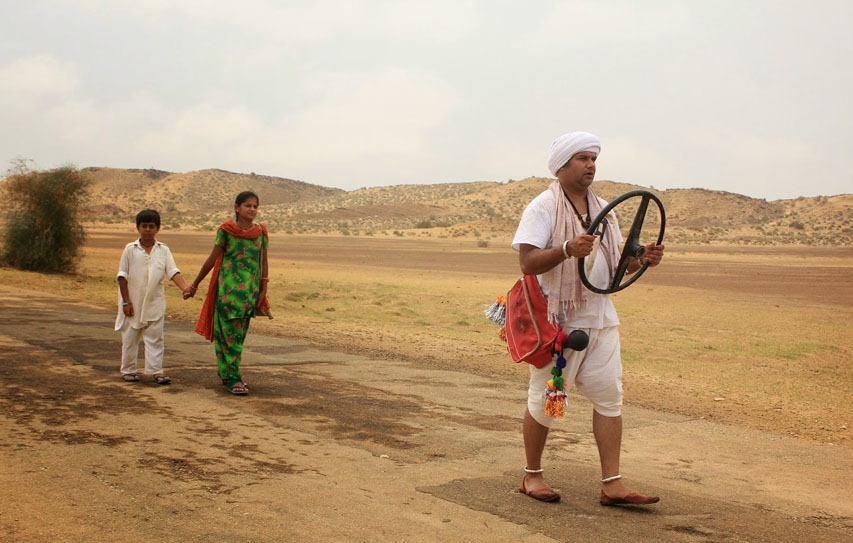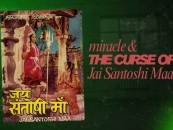
Curtain Raiser
by Rinki Roy Bhattacharya November 10 2015, 6:50 pm Estimated Reading Time: 5 mins, 48 secs“Everything is a celebration in the garden of childhood”
- Pablo Neruda
A question which frequently haunted me raises its head as I write the curtain raiser on the 19th CFSI festival primed to kick start in Hyderabad on Chacha Nehru’s birthday, November 14. The question is:
Do we even know what sets apart a children’s film from other genres? For example, is it a film primarily with child protagonists? Or is it films that have children’s issues at heart?
Can we be truthful and say:
Yes, that is a superb children’s film; or, howl with protest: No that is not a child worthy film! Indeed the question,“What is a children’s film” eluded me even as I was the Vice chairperson of CFSI for three years as we read scripts, discussed eligibility and other criteria. It bothered me while I watched hundreds of entries with other Jury members for the forthcoming festival last July- August.
The first children’s film I watched was at age seven. Father loved watching films at home beamed almost every night by a noisy old 16 mm projector. One birthday, we, the children sat on the floor. The projector whirred to life. On the hastily hung bedsheet turned screen, a wooden doll jumped up and down. Every time it jumped, an identical doll of smaller size popped out of her until there were 7 dolls bobbing up on the screen. Sheer magic! I thought. I often recall that extraordinary experience with a secret smile. No doubt, that simple black and white Russian film featuring the plump Matrioshka doll was made for kids. Call it live-action, animation, or what you will –the early silent film comes closest to a pure children’s cinema. Sound or language was unnecessary. The power of capturing a moving image lent it immediate universal appeal.
From such a humble beginning, children’s films have, naturally, grown up, technically matured, discovered new styles, and modern narratives. No genre is untried, there were animations of every variety – abstract; figurative, with or without live action; thrillers; adventures; ghost stories; heroic human sagas of survival, philosophical or disturbing ark tales, even uplifting stories of human bonding, as well as biopics. Endless genres are exhausted for children as I discovered during our intense viewing sessions. Strangely, several films centred on the elderly. They threw into focus the polarized world of adults and children on the question of the elderly who are deemed redundant by one section. In one particular film, a bunch of clever children rescue their grandparents from being dumped into old age home. It was a hilarious, entertaining and touching film making their point.
Curiously, amid all the variety and spice, a Croatian animation chilled my blood. The film dealt with a town where eerie unborn foetuses of rape victims turn up in a special train to reclaim their lost families! Though a relevant and poignant political protest documenting the country’s grim history, the content was quite out of place in a festival for kids.
It is irrelevant of course to name the names of films selected, or rejected. Most films will be screened exclusively during the Festival season and may not get a theatrical release. One thing, however, was abundantly clear. Film makers are still hung up on preachy moral tales for kids. Adults foolishly believe children have to be given moral lessons through the art forms. Sadly Indian makers are particularly guilty of this. The Indian package was frankly lacklustre and a disappointment. Preachy films make dull viewing. Kids are intelligent viewers and they intuitively pick up subtle signals. If a serious issue is made with an element of fun, disguised in wit, it makes a far greater impact than literal rendering I firmly believe. Remember the Mary Poppins song, “a spoonful full of sugar makes the medicine go down”! It is important as well for kids to watch an aesthetically pleasing work, open their eyes to the beauty around in this era when everyone is glued to I phones or busy whatsapping! Children have to be wooed back from the virtual world lurking with unknown dangers; and what can woo them better than the big screen cinema. It possesses an extraordinary power to transform everything to a larger than life experience, to celebrations affirming Neruda’s words: “Everything is a celebration in the garden of childhood.”
A few personal favourites deserve mention. I was bowled by a long French feature ‘Bird’. A profoundly human narrative where two girls protect their pet duckling from turning into processed meat. They risk their lives for the pet. One of them is wheelchair bound, yet her determination, and her courage is deeply touching. The film is a poignant reminder of how authoritarian parenting cripples children from social responsibility. ‘Bird’ is a triumph of the human spirit. The adventures surrounding a kidnapped hamster Raffi was fun to watch with leery villains and a hot TV chat show.
Boisterous Mission Sputnik when children turn space scientists is bound to prove a popular festival draw. On the serious side, eloquently rendered ‘Little Brother’ ( Kazakastan) ‘The River Road’ (China) ‘Finn’ (Denmark) ‘Bambanti’ (Philippines) and ‘One Day’( China)) to name a handful, are likely contenders . These films essay the brave struggle of unsung heroes in a hostile world asserting their right to live a life of dignity. I do believe some of these works richly deserve wider exhibition and that channels ought to consider this option.
Impressive were the numerous innovative styles explored through animation. ‘Autumn Leaves’ (France) had a matchless magical quality as did some other very short films of the same genre. As I said, there is no point naming names. What matters is the fact that for the kids watching these works it is a multicultural experience opening up a whole new cinematic universe. Our children will enrich their understanding of life as much as their appreciating of cinema. If we recall, some of our own stalwarts like Ray, Tapan Sinha, Shyam Benegal for example, enjoyed making films for children. It is indeed surprising therefore why other practitioners resist the genre with the exception of Nagesh Kukunoor who has consistently made films that take it up. His new film ‘Rainbow’, on a sightless boy’s travails, a travel story through exotic Rajasthan is featured in one of the four main sections. Worth watching.
By sustaining the marathon exercise of holding an International Film Festival every two years the CFSI has done yeomen service to world cinema in general and asserted the cause for children’s rights to their own cinema. It is a ‘bachpan bachao’ like movement through cinema. Similar to the one espoused byNobel Prize recipient Kailash Satyarthy.
Well done CFSI !!




-173X130.jpg)

-173X130.jpg)
-173X130.jpg)
-173X130.jpg)
-173X130.jpg)
-173X130.jpg)
-173X130.jpg)